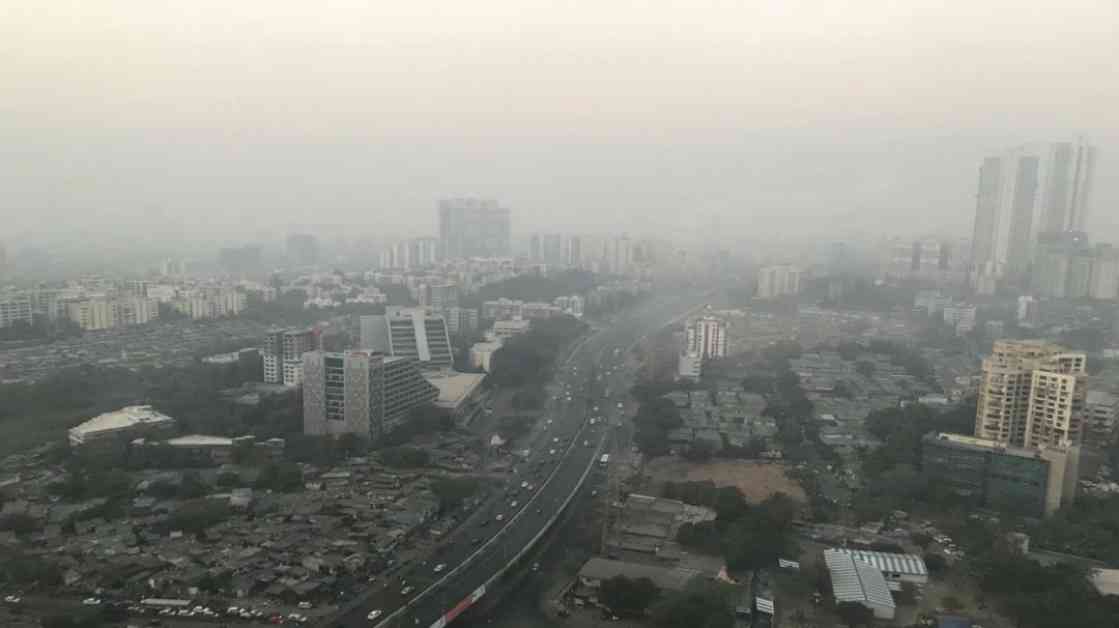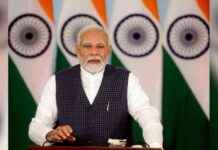MoES Investigates Mumbai Rain Forecasting Errors
In a bid to improve the accuracy of weather forecasts, the Union Ministry of Earth Sciences (MoES) has initiated an investigation into the 42% error in Mumbai’s rain predictions by the India Meteorological Department (IMD). The move comes following a report by The Indian Express, which highlighted significant inaccuracies in the IMD’s daily weather forecasts for the city.
The MoES has sought an explanation from the IMD regarding the errors in the rain forecasts for July. According to sources, both the central and regional departments of the IMD have been asked to provide detailed explanations for each day when the forecasting errors occurred. The goal of the investigation is to identify the root causes of the inaccuracies and determine the necessary corrective measures to enhance the current forecasting system.
Mumbai, being a coastal city prone to heavy rainfall during the monsoon season, relies heavily on accurate weather predictions to mitigate potential risks and ensure public safety. The city is equipped with advanced meteorological systems, including two Doppler weather radars and over 160 automatic weather monitoring stations in the city and its surrounding areas. These systems play a crucial role in providing real-time data for forecasting purposes.
IMD Mumbai is responsible for handling small-scale forecasting models for the city, while the Centre manages large-scale models for broader regions. The focus of the investigation is to pinpoint which model or models within the forecasting system are responsible for the inaccuracies observed in the July rain forecasts. By identifying the specific areas of concern, the IMD can work towards enhancing the precision and reliability of its predictions in the future.
An in-depth analysis conducted by The Indian Express on August 18 revealed that IMD’s forecasts for Mumbai were inaccurate on approximately 13 days in July, which coincides with the city’s peak monsoon season. On eight of these days, the forecasting errors exceeded 25%, indicating a substantial deviation from the actual weather conditions. Moreover, the IMD Mumbai failed to issue timely red alerts on critical days such as July 7 and July 24/25, potentially putting residents at risk.
Challenges in Weather Forecasting
Weather forecasting, especially in regions like Mumbai that experience erratic and intense rainfall patterns, poses numerous challenges for meteorological departments. The complex interplay of various atmospheric factors, such as wind patterns, humidity levels, and pressure systems, can significantly impact the accuracy of predictions. Additionally, the rapid urbanization and changing landscape of cities like Mumbai can alter local weather patterns, making forecasting even more challenging.
The reliance on computer models and data-driven algorithms for weather predictions introduces another layer of complexity to the forecasting process. While these tools are essential for processing vast amounts of meteorological data and generating forecasts, they are not immune to errors or inaccuracies. Factors such as model calibration, data quality, and the interpretation of results can all influence the final forecast output.
Furthermore, the inherent uncertainty of weather systems, especially in the case of monsoons, adds a level of unpredictability to forecasting efforts. Monsoons are characterized by dynamic and evolving weather patterns that can change rapidly, making it challenging to provide precise predictions days or weeks in advance. As a result, meteorological departments must continuously monitor and analyze incoming data to adjust their forecasts in real-time.
Enhancing Forecasting Accuracy
To address the inaccuracies in Mumbai’s rain forecasts and improve the overall accuracy of weather predictions, the MoES and IMD are exploring various strategies to enhance their forecasting capabilities. One approach involves refining the existing forecasting models by incorporating more localized data and fine-tuning the algorithms to better capture the unique weather dynamics of Mumbai.
Collaboration with international meteorological agencies and research institutions can also provide valuable insights and expertise to improve forecasting accuracy. Sharing data, best practices, and technological advancements with global partners can help enhance the capabilities of Indian meteorological departments and strengthen their forecasting systems.
Investing in state-of-the-art meteorological technologies, such as advanced weather radars, satellite imaging, and high-performance computing systems, can further bolster the forecasting infrastructure. These tools enable meteorologists to gather real-time data, track weather systems more effectively, and generate more accurate predictions for specific regions like Mumbai.
Additionally, conducting regular training programs and workshops for meteorological staff can enhance their skills and knowledge in weather forecasting techniques. Continuous learning and professional development are essential for keeping meteorologists abreast of the latest advancements in meteorology and ensuring they are equipped to handle the complexities of weather prediction.
Conclusion
In conclusion, the investigation into the 42% error in Mumbai’s rain forecasts by the MoES is a crucial step towards enhancing the accuracy and reliability of weather predictions in the city. By identifying the root causes of the forecasting inaccuracies and implementing corrective measures, the IMD can strengthen its forecasting systems and better serve the residents of Mumbai. Collaborative efforts, technological advancements, and ongoing training initiatives are key components in improving forecasting accuracy and ensuring public safety during extreme weather events. As meteorological departments continue to evolve and adapt to changing weather patterns, the quest for more precise and reliable weather forecasts remains a top priority for safeguarding communities and infrastructure against the impacts of severe weather.




















